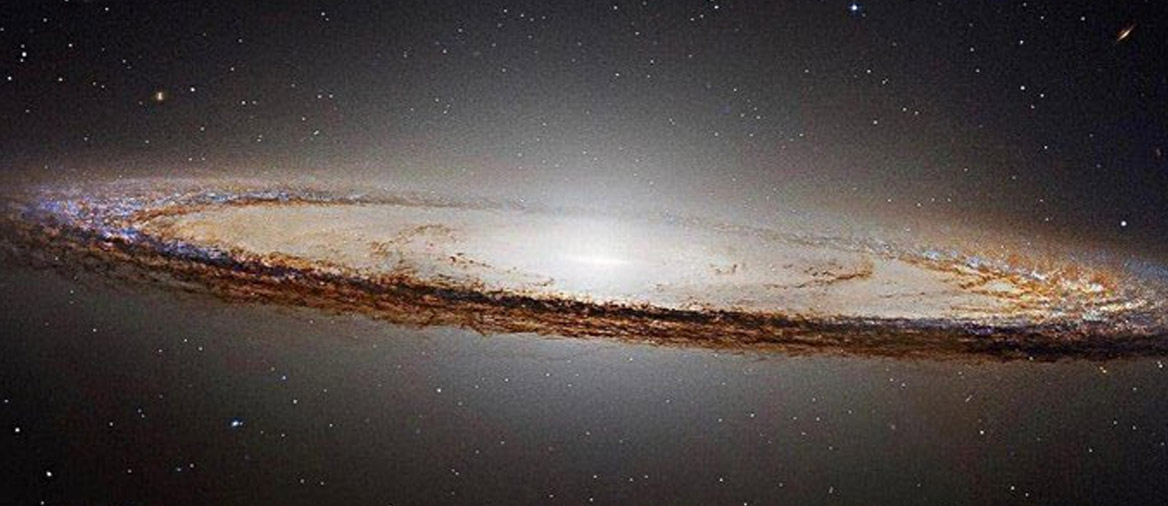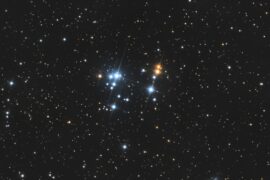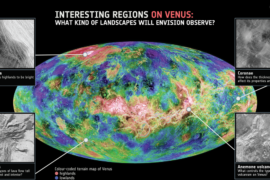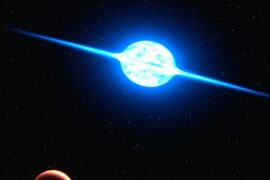One of the most peculiar galaxies in the night sky that can be observed with just a backyard telescope is the Sombrero Galaxy. Its most unique feature is the thick dust rings around its edges.
But that’s not its only visual characteristic. The nucleus at the center is also brighter and larger than average.
All of these features make it a common target for both amateur and professional astronomers that love to study in order to learn more from it.
In this article, we’ll take a look at the core facts and characteristics that we know about the Sombrero Galaxy.
Fact sheet
| Nickname | Sombrero Galaxy | |
| Designation | Messier 104 (M104), NGC 4594, UGC 293, PGC 42407 | |
| Type | Early type spiral / Normal elliptical | |
| Location | Virgo constellation | |
| Distance from Earth | 31.1 million light-years (9.55 Megaparsecs) | |
| Age | 10 – 13 billion years old | |
| Diameter | 49,000 light-years (15 Kiloparsecs) | |
| Apparent magnitude | 8.0 | |
| Absolute magnitude | -21.8 | |
| Radial velocity | 1,024 km/s | |
| Right ascension | 2h 39m 59.4s | |
| Declination | −11° 37′ 23″ | |
| Redshift | 0.003416 |
Sombrero Galaxy Facts

Quick facts
- The ring that can be seen on the edges of the galaxy is made out of dust and is known as a dust lane. It is also believed to contain most of the galaxy’s molecular gas.
- The dust lane functions as the primary star factory for the galaxy.
- The Sombrero Galaxy has a supermassive black hole in its center.
- The supermassive black hole at the center of the galaxy has at least one billion times the mass of the Sun.
- The Sombrero Galaxy is very bright with an apparent magnitude of 8 which is impressive considering it is pretty far away at 31.1 million light-years away.
- Thanks to its impressive brightness, the Sombrero Galaxy can be seen with a basic amateur telescope with an aperture of 70mm or more, but an aperture of 200mm is recommended to distinguish the dust disc.
- It is considerably smaller than the Milky Way by about 50%.
- It is located on the border of the Virgo and Corvus constellations.
- It is the brightest galaxy with a radius of 32 million light-years from Earth.
- The white bulge or nucleus is made out of 1,200 to 2,000 globular clusters. Each cluster contains tens of thousands or even millions of stars.
- Charles Messier, the creator of the Messier catalog of astronomical objects knew of the existence of the Sombrero Galaxy and had it in its notes, but never got around to adding it. It was until long after his death in 1921 that it was finally added and got the M104 designation (out of 110).
- It might be orbited by an ultra-compact dwarf galaxy.
Discovery
The Sombrero Galaxy was discovered by the french astronomer Pierre Méchain on May 11, 1781. A second astronomer, William Herschell discovered it independently on 1784, and later it was realized they had both discovered the same object.
It was added to the Messier catalog in 1921.
Naming
The name of the Sombrero Galaxy comes from its resemblance from our point of view to a Mexican traditional hat. The appearance of a galaxy depends on how its tilted towards Earth. If we were to look at it from the top, it would look like an elliptical bright object.
It is not known who gave the Sombrero galaxy its unique name. Unlike other celestial objects, galaxies are not named after mythological characters, and only the most prominent ones receive a proper name. Check out this list with all the galaxy names to learn more about this process.
Galaxies also receive various designations for the multiple catalogs that keep track of every single one that is discovered.
The Sombrero Galaxy has the following catalog designations:
- Messier 104 (M104) – Messier catalogue
- NGC 4594 – New General Catalogue of Nebulae and Clusters of Stars
- UGC 293 – Uppsala General Catalogue of Galaxies
- PGC 42407 – Catalogue of Principal Galaxies
Physical characteristics
The defining feature of the Sombrero Galaxy is its very prominent dust lane. While this type of dust ring is common amongst elliptical galaxies, the one in M104 is particularly thick. This indicates the galaxy might be quite young as the dust lane functions as the main star factory.
The diameter of the Sombrero Galaxy is approximately 49,000 light-years long (15,000 parsecs). This puts it on the shorter side of the average size for a galaxy. For comparison, the Milky Way which is the galaxy where our Solar system is located is a little bit more than 2 times larger, and the Andromeda galaxy is about 6 times bigger.
Despite its relatively small size, the Sombrero Galaxy is the brightest galaxy in the neighborhood. It is so bright it can be seen with a basic home telescope. This is because of it large bulge (nucleus) which contains an above-average number of globular clusters, and probably a high concentration of stars.
The contrast between this extremely bright white nucleus and the defined, symmetrical and dense dust lane make the Sombrero Galaxy so easily recognizable.
How to find and observe the Sombrero Galaxy
The Sombrero Galaxy can be seen near the border of the Virgo and Corvus constellations. An easy method to find it manually is to locate the Big Dipper and star-hop from there to Orion and then Virgo.
We have detailed instructions and a diagram in our article on how to find Virgo. the galaxy is about 11.5° west of Spica, the brightest star in Virgo.
If you are using a star map or a location app, the Sombrero galaxy is located at a right ascension of 2h 39m 59.4s and declination of −11° 37′ 23″.
In order to see it, you will need a telescope with an aperture of at least 70mm of aperture although 100mm or more will make it much easier, especially in places with high light pollution. To distinguish the dust lane you will need a more powerful telescope in the 200mm range.
The following sections show some photos taken mostly with backyard amateur telescopes.
Photos
Here’s what you can expect to see when taking a look at the Sombrero Galaxy.
Please note that these images were probably taken with high exposure and might have been slightly post-processed so your result when actually looking through a telescope will vary.
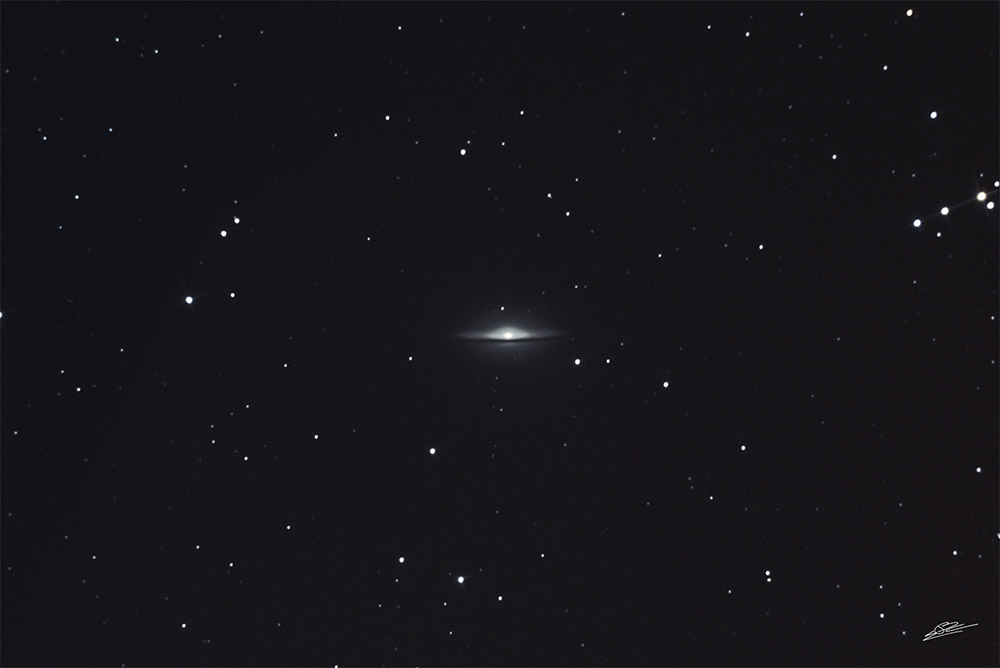

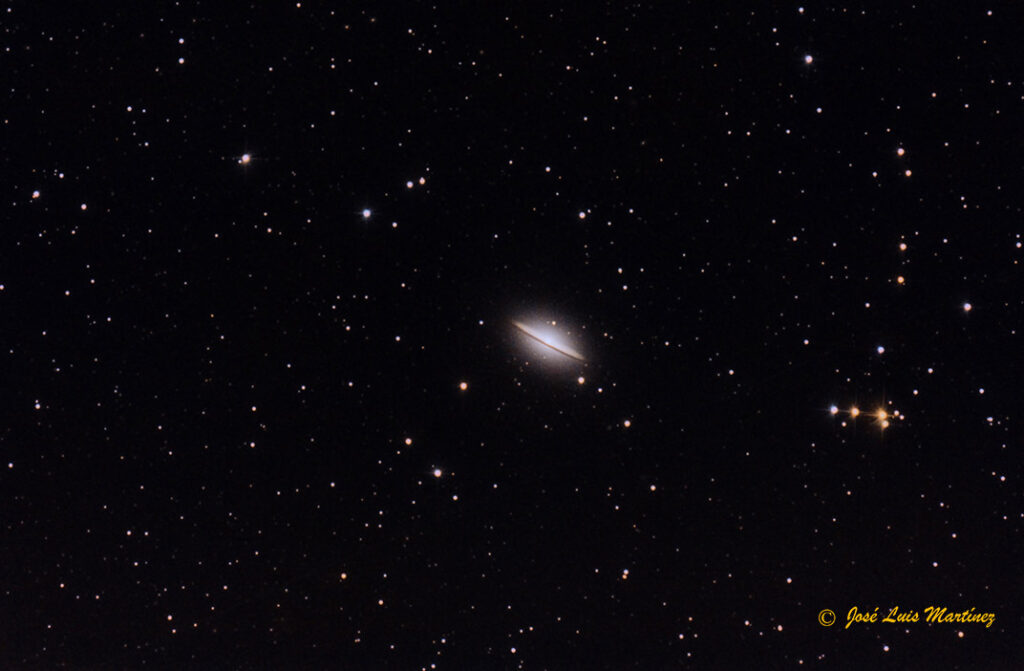
Planets in the Sombrero Galaxy
The Sombrero Galaxy is too far away for us to be able to detect individual planets orbiting any of its stars. The farthest confirmed exoplanet is 27,700 light-years away from Earth and is still in our own galaxy. The Sobrero Galaxy is 1,100 times farther away than that.
While some candidate exoplanets have been found in closer galaxies like Andromeda, none have been confirmed yet.
However, there’s nothing that indicates that the Sombrero Galaxy can’t have planets. In fact, it probably has millions or even billions of them. We just don’t have the technology yet to observe them.
Summary
- The Sombrero Galaxy is one of the brightest and most recognizable objects in the night sky.
- Its dust lane makes it look like it has rings around it and the contrast with its bright white nucleus gives it its unique look and name.
- It can be observed in the constellation of Virgo.
Enjoyed this article?
Get daily 10-minute PDFs about astronomy to read before bed!
Sign up for our upcoming micro-learning service where you will learn something new about space and beyond every day while winding down.

